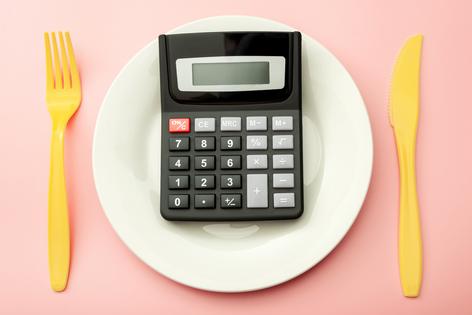Environmental Nutrition: The new calorie math
Published in Health & Fitness
Calorie counts are everywhere: stamped on packaged foods, plastered on restaurant menu boards, and accompanying recipes in magazines. They’re inescapable. And many of us pay a great deal of attention to these numbers in the name of calorie-controlled eating.
In recent years, however, scientific studies have cast doubt on the way calories in some foods are measured and how we typically count them.
You see, calorie stats are based on a century-old formula called the Atwater system, where the macronutrient components — carbohydrate, fat and protein — of a food have a set number of calories (a unit of energy). But this fails to tell the whole picture regarding the calories you [actually] extract from foods.
“When it comes to the way we metabolize calories, the types of foods we eat has a big impact on this,” says Megan Hilbert, a Registered Dietitian Nutritionist with Top Nutrition Coaching. Calorie absorption and metabolism are more complex than we may think.
Here are a few ways you can tweak your diet to help eat your way to a calorie deficit, or at least make it harder to go overboard on them.
Go nuts for whole nuts
Nuts are not a low-calorie food, but a few studies have shown we metabolize (absorb) fewer of their calories than once thought. For instance, an investigation in the journal Nutrients found that we typically glean about 16 percent fewer calories from cashews than what you would read on nutrition labels.
“Because available energy in whole foods like nuts is behind cell walls, we often don’t absorb every last calorie, and thus, this energy gets expelled in our stool,” Hilbert explains. Microorganisms in our gut microbiome also get access to some of the calories in almonds and other nuts, which may help explain why studies have failed to show that eating calorie-dense nuts leads to weight gain. With the extra processing that breaks down the nuts’ cell walls, there is a good chance we absorb more calories from nut butter than whole nuts.
Cool down your carbs
When you cook starchy foods like rice and potatoes and then let them cool down in the refrigerator for several hours a unique type of carb called resistant starch is formed. “This is a carbohydrate that our digestive system can’t break down into energy and instead becomes food for our gut bacteria,” notes Hilbert. “Research shows that resistant starch has fewer calories than regular starch — two instead of four calories per gram.”
...continued







Comments